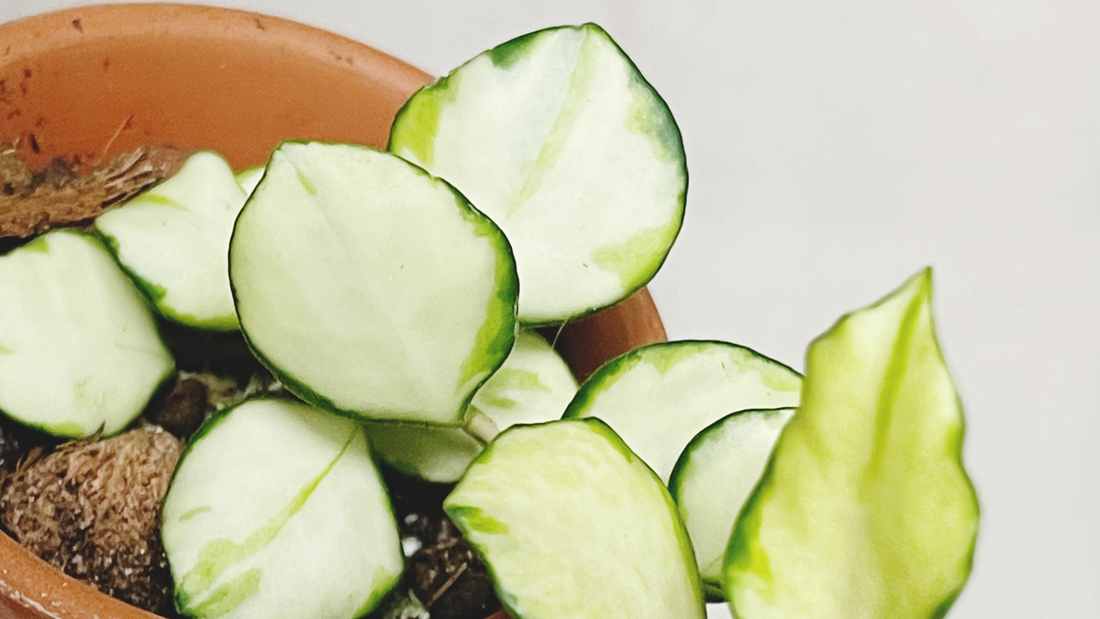
Hoya Care Tips
Writing this post is extremely exciting as Hoya is definitely on at the top of my favorite plant list!
If I were only allowed to have one plant (which is not far from the reality considering my partner is getting overwhelmed with the amount of greenery our apartments is currently harboring) it would most likely be a hoya and here is why:
Hoyas are extremely diverse and versatile: from a tightly bound Carnosa Compacta (also known as 'Hindu Rope' for its resemblance to a woven cord) to spiky Linearis to variegated and dainty varieties such as Heuschkeliana, hoyas vary in shapes, colors, growth patterns while remaining consistent in unfussy and easy going nature.
Hoyas are typically known for woody stems and thick leathery leaves which are among many properties making them similar to some succulents: these epiphytes tolerate periods of draught extremely well by drawing needed moisture from their foliage. They also are a great option for any indoor conditions as hoyas do not typically require humidity to be over 40%.
Hoya Growth:
Although varieties like wayetii, lacunosa and linearis tend to bunch up and trail, most hoyas prefer to grow light runners: long and seemingly barren tendrils that are looking for a well lit spot to hold on to and develop more growth. So if you see your hoya "branch out" seemingly without a purpose don't rush to trim: a day will come when you notice a couple of tiny buds pop up on it and produce a tiny growth which will quickly develop large leaves.
When thinking about the best growing conditions for your plant, remember: hoyas are natural epiphyte, meaning out in the wild they grow on trees and their roots and shoots need something to hold on to. That is why various trellises are popular accessories for this plant: the tendrils wrap around anything that comes across their way, allowing to create truly unique shapes from this living piece of art.
Soil and water:
Another reason why hoyas are great for beginners: they are perfectly happy in regular or succulent potting mix and will still thrive if you leave them dry for several weeks. Some even claim that hoyas can be watered as rarely as cacti and although they will survive, the wax leaf plants do not thrive if watering is scarce and inconsistent. By all means avoid overwatering: hoya's fine root system is prone to rot and will not be forgiving to sitting in moist soil. If you are making your own substrate make sure to add plenty of perlite and some orchid bark to help the roots climb around.
Light:
They key ingredient in hoya happiness is bright indirect and often direct light, depending on the variety you are growing. Majority of hoyas can be trained to tolerate direct light and even get "sunstressed" - darker green on their leaves turning reddish and white variegation developing a pink hue giving these unique epiphytes a distinct look.
Although most hoyas have similar care needs, stay tuned for more blog entries on specific varieties (we love hoyas at Parkside Plants and can talk about them forever!)
